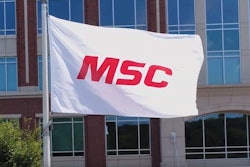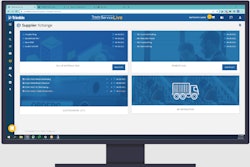Enterprise Resource Planning (ERP) software implementation disasters are the result of assorted smaller, and seemingly unrelated, actions that converge in a monumental event. This costs a company money in labor, delays, downtime, productivity and equipment. Less tangible, but stinging, nevertheless, is a loss-of-face and credibility for your upper management, and damage to your company’s brand integrity. So, why do ERP implementations go awry?
But first … the Be-all and End-all
ERP software is an integrated technology solution that seamlessly links, and makes visible in real-time, critical business functions and information throughout your enterprise — manufacturing, inventory, financials, quality assurance, compliance, sales and more. Data is collected, stored, managed and interpreted in a centralized database, and integrated business intelligence provides a powerful means to analyze and visualize your data and expedites reporting. The result? Increased efficiency and improved profitability. A successful ERP implementationunfolds as planned, stays on schedule and on budget, and produces the desired results. This is the be-all and end-all.
Let’s see why some implementations go all wrong.
1. Lack of buy-in
The Captain’s chair should be occupied during this foray into the relative unknown. An engaged CEO will inspire top managers and decision makers to take up command positions “on the bridge” of the enterprise. Create a company-wide awareness of this major undertaking, with a call for “all hands on deck.” Each employee should know the destination (full ERP implementation) and understand the timeline for arrival.
2. Poor needs assessment
If a company isn’t fully aware of its strengths, competencies, and deficiencies, how can it correctly identify needs and define goals for an investment in ERP software? The company should conduct a detailed assessment of its operation, with input from all stakeholders. There’s no room for a “do-over.” So, it’s imperative that the assessment is thorough, documented and prioritized by critical requirements. The company also needs to understand the importance of an ERP system fully delivering on a requirement. In assessing vendors, does a solution simply “check the box” or truly solve the problem for your company long-term? Are you comfortable with a promise of “future delivery” for addressing today’s business issues s some vendors may state; or is getting broader, more comprehensive functionality that can also leverage 3rd party expertise in key areas where your business needs it important? With a level of unknowns in the future, it may be critical that your ERP vendor plays well with others today to allow you the greatest amount of flexibility now and into the future. Understanding your company’s requirements and the type of ERP solution that will best fit your business will be critical in your decision-making.
3. Poor overall planning
You cannot plan as you go. Organize an internal Project Team comprised of members familiar with the manufacturing operation, some of which may have previously gone through a technology conversion, preferably, an ERP implementation. The team should focus on change management and clearly articulate SMART (specific, measurable, attainable, realistic and timely) goals. Consider an outside consultant if your team is deficient in a critical area. Then, set up project priorities. Ensure this team has been empowered by the organization.
4. Poor data migration planning
Data is invaluable; it’s what powers the ERP software. So, put procedures and safeguards in place to prevent data inaccessibility, corruption and loss. Decide how much historical data to keep. Plan to clean up obsolete or redundant data and reformat it, if necessary. Static data might be migrated early, while dynamic data can be kept for last. Note: Data migration from previous systems to the new ERP software is the most time consuming of all implementation activities.
5. No articulated timeline or budget
Companies vary in the amount of time they allocate to ERP implementation. Some move more slowly in order to maintain better control of the process. That’s not a problem. However, rushing the process is a common and major cause of failure; where details are missed, training is not completed, key decisions aren’t vetted and the implementation and organization suffer as a result. A lackadaisical attitude toward setting a realistic timeline and budget could result in a drawn-out debacle with a ballooning price tag.
6. Inadequate investigation of the provider
A mismatch between your needs and the ability of the ERP provider to satisfy them does not make for a “happily ever after.” A company should entertain many suitors, performing a background check on each ERP solution. How long has the provider been in the ERP business? Can it meet your specific industry’s or organization’s needs? Is there business model flexible enough for your ever-changing needs? Will the provider supply references? Is it a comprehensive solution with a knowledgeable team holding your hand during planning, implementation, training and ongoing support? Do they behave like a partner, or a pitchman for magic beans? If the provider is able to meet your requirements, the relationship could result in a fairy tale ending!
7. Not understanding or not using key features
If the ERP software’s functionalities go unused due to lack of understanding, absence of training or because management hasn’t promoted the initiative and persevered to its full implementation, then the company has wasted its resources on a glorified accounting program.
8. System failure during go-live
It only makes sense to test the ERP software to verify that all functionalities are working — simulating as closely as possible user volume and behavior — and to fine-tune procedures and avoid any unplanned difficulties and downtime. Conduct a “day-in-the-life” exercise. For this in-depth testing, an entire day’s worth of operations is duplicated in the new ERP system — start to finish, every feature, every customization, every transaction.
9. Failing to adequately train
If a company neglects training, it risks a problematic “go live” event, and it will not get optimum return-on-investment in the future. Most ERP vendors include training through the implementation process, and arrangements can be made for service/support after go-live. However, it’s important that a company’s staff takes the provider’s training and makes it their own, customizing to their industry, particular processes and even an individual’s specific role. “Coach-to-peer” training can be implemented, where “power users” work closely with the provider’s implementation team. In turn, these experienced users will instruct other employees, becoming the “go-to experts” for the organization.
10. Keeping legacy applications
Keeping and using old technology (legacy applications), other than for reference, is inefficient for production, confusing for employees and expensive; you may continue to pay for its maintenance, hardware and upgrades, and interfacing with the ERP. Say “goodbye” to legacy applications during the ERP implementation.
Remember, no implementation goes 100 percent according to expectations. Any of the 10 ERP implementation faux pas listed above could become a catastrophe. Just let it not be yours.























